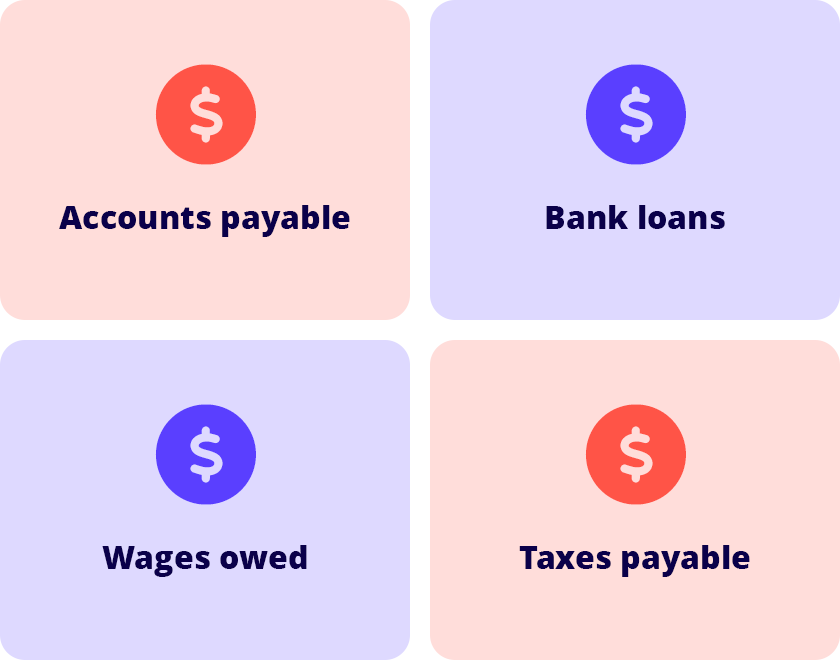GLOSSARY
What is a liability?
A liability refers to your debts as a business. When it comes to basic business management and sound accounting, understanding your liabilities should be a chief concern.
What are liabilities in business?
Liabilities are a business’ legal debts or financial obligations that arise during the regular course of doing business.
Liabilities represent claims by creditors on the assets of a business and are essentially amounts owed to other businesses or individuals. Liabilities are a crucial aspect of financial analysis as they provide insights into the liquidity and overall financial health of a business.
How do you calculate liabilities in accounting?
Liabilities are recorded on a company’s balance sheet. They are a crucial component of the accounting equation. In small business accounting, you can discover your liabilities by using a simple calculation:

Assets = Liabilities + Equity
Examples of liability
Liabilities are the opposite of assets. They can refer to a range of debts or outgoings. Some of the more common liabilities for a business include:

- accounts payable
- bank loans
- wages owed
- taxes payable.
What are current liabilities?
Current liabilities are liabilities sitting on your balance sheet that are seen as short-term. If you have a debt payable (for example an unpaid invoice for supplies) within a year or a standard operating cycle, this is known as a current liability.
What are non-current liabilities?
Non-current liabilities, conversely, are long-term liabilities on your balance sheet that reference debts that won’t be paid for more than a year.
See related terms
What is an invoice?
What are fixed assets?
What is a balance sheet?
Additional resources
Disclaimer
This glossary is intended for small business owners and contains definitions suited to their needs. For more comprehensive explanations, we recommend consulting an accounting or bookkeeping professional. Reckon does not offer accounting, tax, business, or legal advice.
Try Reckon One now for free!
30 days free trial. Cancel anytime.
